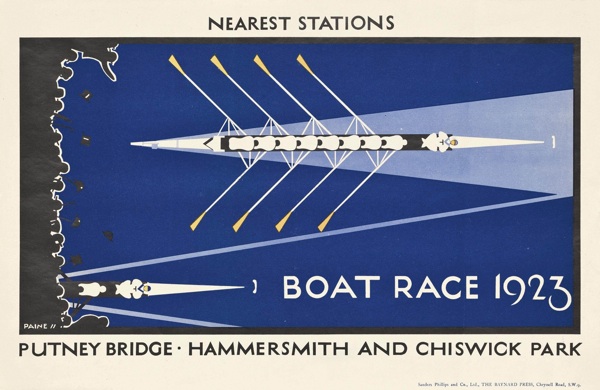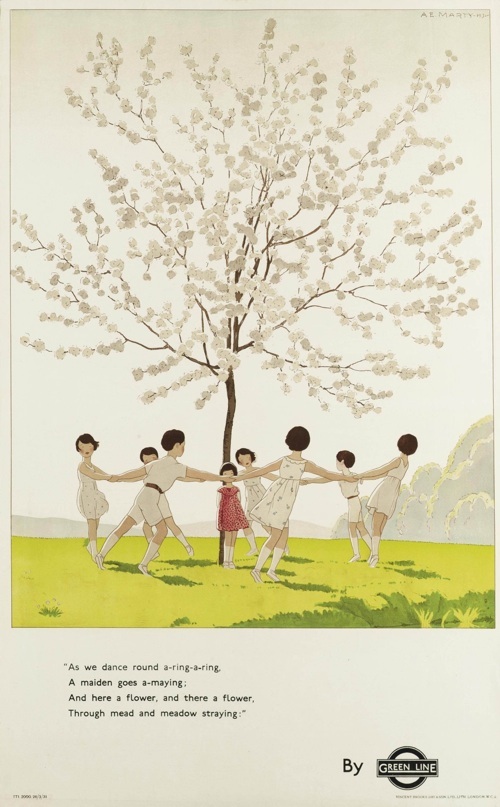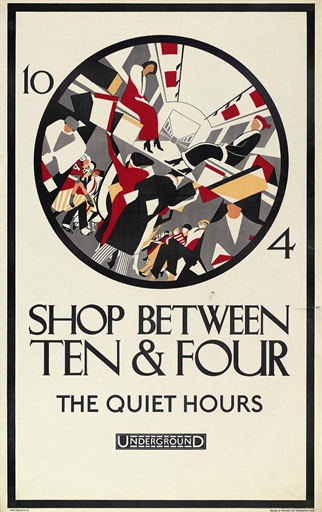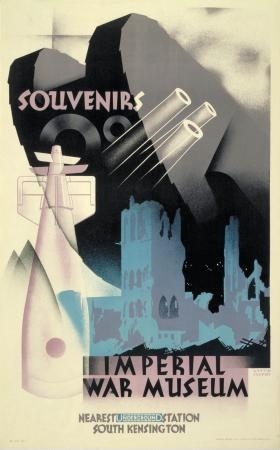Highs and lows
So, as previously advertised, it’s time to consider the Christies London Transport Sale. Mostly this boils down to just one thought which is that is was really very expensive, and if things carry on like this we won’t be buying very many posters in the future. A large chunk of what sold could be put up in support of this proposition, but the prime example has to be the Edward Wadsworth Imperial War Museum poster.
£37,250 of your pounds for that, which was the highest price in the sale. And an awful lot of money for a poster if you ask me.
Other winners include Charles Paine, with these two Boat Race posters going for £25,000 and £10,000 respectively.
Another popular choice was Andrew Power (aka Sybil Andrews), noted by Mr Crownfolio, who was watching the whole thing go by, as doing particularly well.
The top poster went for £25,000, the lower one for £13,000.
I’ve heard from a couple of sources that the London Transport Museum ‘are very pleased’. Well they would be, wouldn’t they.
I’m not sure if I’m pleased though, and this isn’t just because I might never be buying a poster again (and if I do, the odds are that it won’t be from Christies). I’m also bothered because I can’t make head nor tail of the results. There seems to be no pattern at all.
You see I look at this Misha Black/Kraber poster and go, ooh, prices for Modernism are up, given that it reached £5.250.
But then this pair goes for only £625 and blows my theory out of the water.
I’d like to say that Art Deco is going out of fashion, given that this Marty went for just £1,625, much lower than many posters.
But then others are holding their prices – thisDupas, for example fetched £5,625.
I could therefore conclude that people are silly, perhaps, as the Marty posters are much better, but that’s just my opinion and clearly not borne out by actual prices.
The same is even true in the case of individual designers – or pairs. This Eckersley Lombers was £3,500
But this one went for just £688.
They’re both teeny-tiny bus posters; admittedly the cheaper one does have mad staring eyes, but I’ve never seen it before, so it’s more interesting. Isn’t it?
There was the same variation in prices for McKnight Kauffer too, with this 1931 design fetching £12,500.
While his Buckingham Palace design of three years later went for just £688, and earlier works fetched even less.
What is it possible to conclude from all this confusion then? Mostly it looks like people who are considerably richer than me throwing money at posters and seeing what sticks, in a sale where mass hysteria had the upper hand over exhaustion. A few people have emailed me with examples of posters which sold for way over their ‘usual’ prices in the sale. One obvious one for me was this pair of Wadsworth designs for the South Kensington Museums, posters which are dear to my heart.
These have been up for auction recently, in good condition, and fetched well under £1,000. Go, as they say, figure.
Before the sale, I wondered on here whether the London Transport Museum was selling because they thought that the market for this era of posters was at its peak. I have no idea whether they believed it or not, but the sale would seem to suggest otherwise. What was also interesting was the number of foreign bids too. So I don’t think we can call the top of the market yet.
But a different question is whether these prices now set the standard, or whether this sale will be a one-off freak event in which people have paid over the odds because of provenance, over-excitement or whatever. Interestingly, we won’t have to wait too long to find out. The next Christies Poster Sale is, to my surprise, on 1 November. I’ll take a look at that next week. In the meantime, please put your thoughts on this sale in that nice box beneath. Thank you.









































